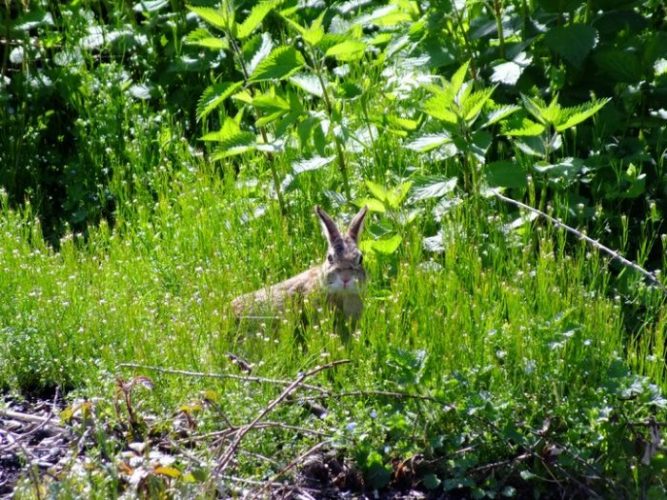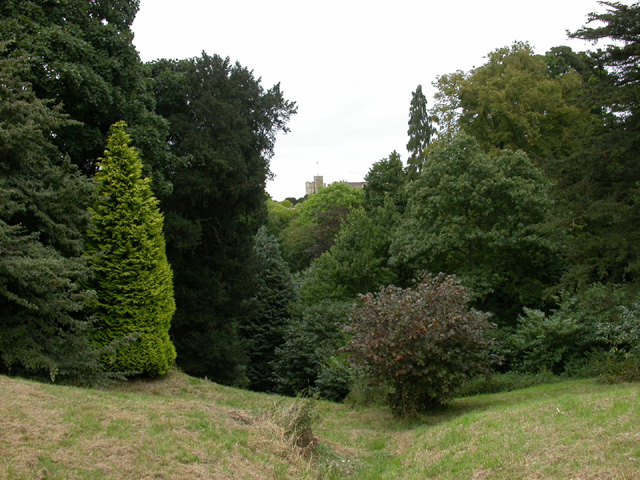As a child I envied our neighbours manicured gardens and wondered why my parents permitted grass and wild flowers to overrun our garden space which resembled a miniature jungle especially after the first monsoon rains when the untamed coral vine draped itself over the neem tree, its blushing pink blooms, a brilliant contrast against the verdant neem foliage while a merry mix of Indian doab, green foxtail and crown grass carpeted the garden floor. Then one morning I sighted a wild hare romping about our garden. It had probably crossed over from the nearby jungle into what must have served an extension of its natural habitat. I realized ours wasn’t simply a garden meant for human enjoyment and recreation. It was a wildlife garden open to all living creatures.

Today, years later, when the earth continues to lose green cover and the latest report from the Intergovernmental Panel of Climate Change has a code red which spells disaster for humanity – it makes sense to nurture these wildlife gardens whenever and wherever possible. Back then, even a modest garden space like ours had rich biodiversity, going into hundreds of species that included insects, birds, molluscs, invertebrates and spiders.
Many of them made an appearance during the monsoon. Like my favourite red velvet mites that looked like rubies strewn among the grass sparking with raindrops. Earthworms emerged from the garden floor, attracting new bird species that joined our resident birds to feast on them. Snails and slugs rode in the paper-boats I placed in the garden puddles while Indian tree frogs and Asian common toads entertained us with their croaking competitions during gloomy, rainy evenings.
Plants constitute the basic food web of a garden, and in a good wildlife habitat plant diversity is a must to ensure a robust food supply through different seasons. My parents hadn’t only opened up our garden space to wildlife, they had prioritize their needs by selecting plants that offered native wildlife food and protection and allowing the wild species rich in nectar, seed and berries – host for butterflies during larval stage, to grow free.
Even in a city like Kolkata where I now reside I’ve observed the tiniest green spaces have a huge role to play in sustaining the native wildlife as well as attracting those from afar. Our apartment building overlooks a small green patch where come monsoon grass, wild coat-button and small yellow wild indigo flowers sprout. These wild varieties attract grass yellow, common emigrant and glassy tiger butterflies who not only enjoy the nectar, but also flit by our balcony garden, pollinating our chillies and tomato flowers doing us a huge favour.
Besides food for grass-feeding caterpillars, the patch provides cover for insects and small invertebrates that native birds come to prey on. It’s a sight to behold as red-vented bulbuls and white-breasted kingfishers feed. A wild creeper that grows over the compound wall attracts a blue rock thrush that travels all the way from the Himalayas to winter in Kolkata, and I often spot a marsh mongoose couple among the tall grass, enjoying the undisturbed space.

As a garden lover myself, I understand the thrill of strolling through your garden, discovering a new leaf or bud sprout, watching butterflies and sunbirds flicker in and out of hibiscus bushes. So while it’s nice to open up your garden to wildlife, you shouldn’t deprive yourself of these explicit joys so rare in urban life. To strike a balance, try devoting a secluded corner to wildlife, which will allow you to enjoy your garden space without interrupting their privacy, so crucial during breeding season and hibernation. Simple steps like avoid mowing this section of the garden to allow the space to relax for grasses to grow tall and produce flowers and seeds will serve wildlife in the same way grassy meadows and wildflower carpeted hillsides in the countryside do.
According to an estimate by the U.S. Environment Protection Agency, yard debris that include fallen leaves make up a huge 13 percent of the nation’s solid waste and an act as small as trashing leaves can lead to release of dreaded greenhouse gases if decomposed in the lack of oxygen. An environment friendly approach is to leave the fallen leaves and allow toads, mammals and inverterbrates to thrive.
Alternatively you can trash decomposing wood, plant trimmings and dry leaves in one corner of your garden, preferably under a spreading tree that doubles up as a roosting and nesting site for birds to prey on insects. With a water feature or even a small pit for water to collect, it will do a precious service to the biodiversity that shares your garden space, while your remaining garden acts as their food station. These wildlife gardens, however small they might seem, not only sustain wildlife, if maintained well, they can help in fighting climate change.
We often imagine gardens as structured private spaces with flowers and trees belonging to people or institutional and public campuses that tend to them and miss how important these natural spaces are to the native wildlife, especially in the recent advent of depleting natural habitats. And for humans like us confined to a life of routine, they are significant too. It’s a break-away from what we’re used to seeing as a garden. Like a breath of fresh air, these untamed and unstructured wildernesses remind many like me of carefree childhood days. The kind Elizabeth Barrett Browning reminisces in her poem, ‘The Deserted Garden.’ Here are a few lines.
The beds and walks never vanish’d quite;
And wheresoe’er had struck the spade,
The greenest grasses Nature laid,
To sanctify her right.
Images courtesy: Wikmedia Commons, Pxhere
Lesley D. Biswas is a freelance writer and children’s author based in Kolkata. Her interests include nature, bird photography and cricket.







